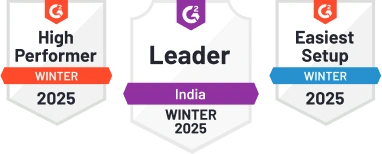Grab a chance to avail 6 Months of Performance Module for FREE
Book a free demo session & learn more about it!
-
Will customized solution for your needs.
-
Empowering users with user-friendly features.
-
Driving success across diverse industries, everywhere.
Grab a chance to avail 6 Months of Performance Module for FREE
Book a free demo session & learn more about it!
Superworks
Modern HR Workplace
Your Partner in the entire Employee Life Cycle
From recruitment to retirement manage every stage of employee lifecycle with ease.



Seamless onboarding & offboarding
Automated compliance & payroll
Track performance & engagement
Engineering Design OKR
Objectives and Key Results (OKRs)
Role Overview:
The Engineering Design OKR plays a critical role in the Engineering industry by ensuring the design and development of innovative, functional, and cost-efficient engineering solutions.
This position is responsible for coordinating with various teams, overseeing design activities, and ensuring that designs meet industry standards and client specifications.
Objective 1: Improve Design Efficiency
Key Results:
- Reduce design cycle time by 20% over the next quarter.
- Implement 5 design automation tools to streamline processes.
- Achieve 95% on-time delivery for all design projects.
- Increase design collaboration by engaging 100% of design teams in bi-weekly review meetings.
- Enhance project documentation with 100% completion rate on design templates.
Objective 2: Enhance Design Quality
Key Results:
- Achieve zero design errors in final deliverables for the next 3 months.
- Incorporate 10% more sustainable materials in design projects.
- Increase customer satisfaction with design quality to 90% or higher in client feedback surveys.
- Introduce 3 new design validation techniques to ensure product performance under real-world conditions.
- Reduce rework requests by 25% through more thorough design reviews.
Objective 3: Foster Innovation in Design
Key Results:
- Generate 5 new innovative design concepts per quarter.
- Develop and prototype 2 new technologies or design approaches annually.
- Implement customer-driven design improvements in 100% of projects.
- Increase R&D collaboration by 30% through joint project initiatives with research teams.
- File at least 1 patent or innovative design submission every year.
Objective 4: Improve Cross-Functional Collaboration
Key Results:
- Coordinate with 100% of cross-functional teams to review designs and gather feedback.
- Reduce design handoff delays by 15% by improving communication with engineering, marketing, and production teams.
- Increase participation in cross-departmental workshops by 50% annually.
- Hold monthly design and technical meetings with at least 85% team participation.
- Ensure design requirements are met in 90% of the projects without further revisions post-handoff.
Objective 5: Optimize Design Costing
Key Results:
- Reduce material costs by 15% in design implementation.
- Lower design process costs by 10% by automating manual tasks.
- Achieve a cost reduction of 20% for projects exceeding $500,000 by improving budget forecasts.
- Increase design cost-efficiency by delivering 95% of projects within budget.
- Ensure that 100% of designs meet cost constraints without compromising quality.
Conclusion:
The role of Engineering Design OKR is pivotal in the Engineering sector, ensuring the delivery of high-quality, cost-effective, and innovative designs that align with client needs and industry standards.
By achieving the outlined OKRs, professionals in this role contribute significantly to the overall success and growth of the company and the engineering industry as a whole.
Generate content in this structured format with clear, concise, and measurable KPIs while maintaining professional readability.




